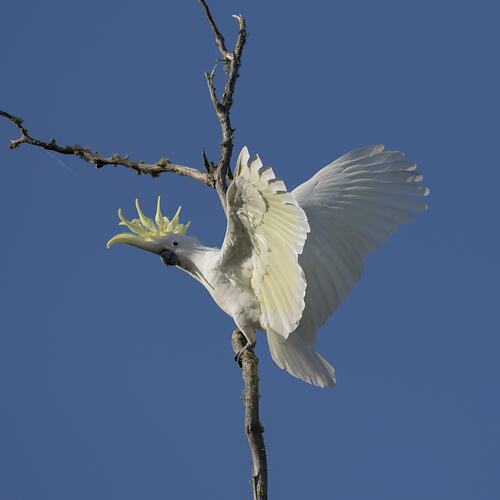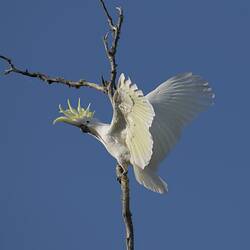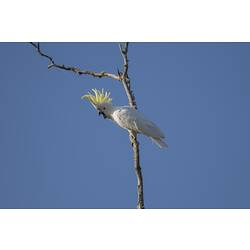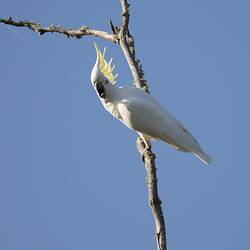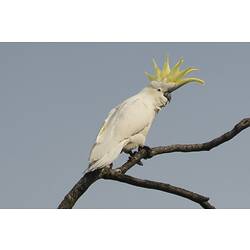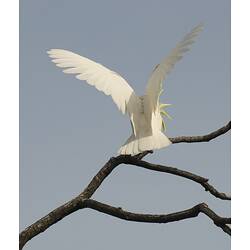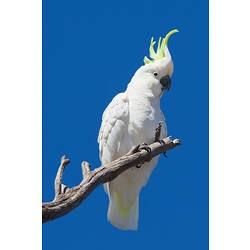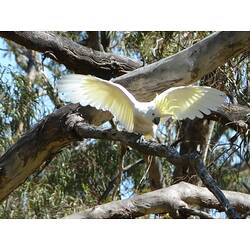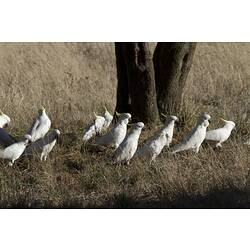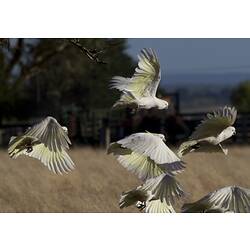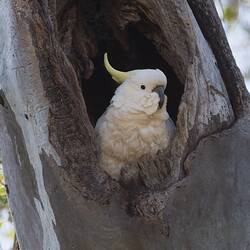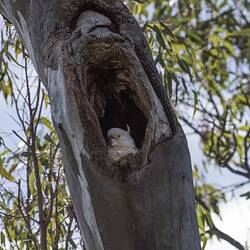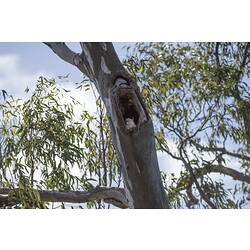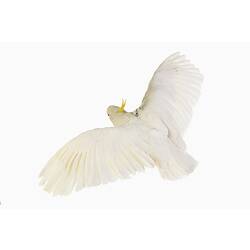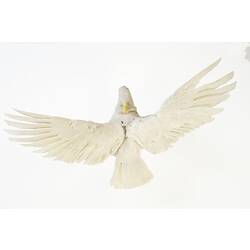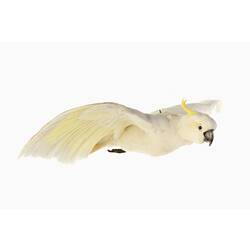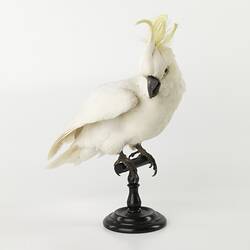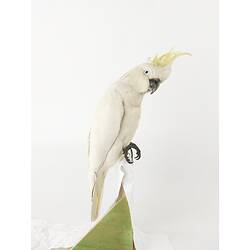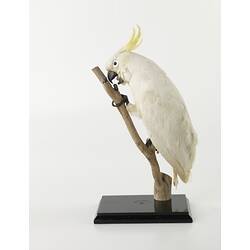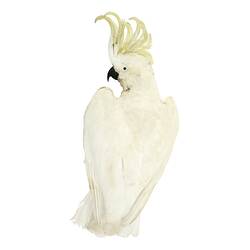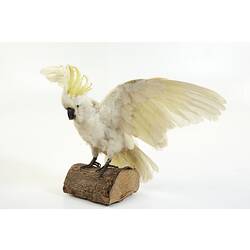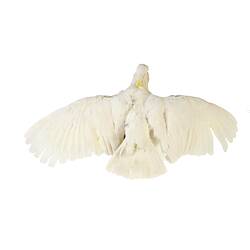General Description
Large parrot. Body white, with underside of the wings and tail tinged yellow. Has a distinctive yellow crest on the head. Bill and legs dark grey to black. Eyes of females red-brown, males dark brown (distinguishable at close range). Bill to tail length up to 50 cm.
Biology
Sulphur-crested Cockatoos are extremely noisy, both in flight and while resting, making loud, harsh calls that can be heard from a distance. They feed in groups, eating berries, roots, fruits and seeds, while one group member watches for danger from a neighbouring perch. They also exhibit destructive behaviour by biting off small branches from trees when not feeding; this is thought to help keep their bill trimmed. They sometimes hang upside down from branches with outstretched wings. Two to three eggs are laid on decayed debris within hollows in old growth trees. Both sexes prepare the nest, incubate the eggs and care for the chicks. Birds tend to stay in the same area, with chicks remaining with their parents and family groups remaining together indefinitely.
Distribution
Eastern, northern and south-western mainlaind Australia and Tasmania.
Habitat
Forests, woodlands, grasslands and urban areas.
More Information
-
Animal Type
-
Animal SubType
-
Brief Id
A conspicuous noisy white cockatoo with a yellow crest.
-
Colours
White, Yellow
-
Maximum Size
50 cm
-
Habitats
-
Diet
Herbivore
-
Diet Categories
Fruit, Seeds
-
Endemicity
-
Commercial
No
-
Conservation Statuses
CITES: Trade restrictions (Appendix II), FFG Threatened List: Not listed, EPBC Act 1999: Not listed, IUCN Red List: Least Concern
-
Taxon Name
-
Common Name
Sulphur-crested Cockatoo
-
Kingdom
-
Phylum
-
Subphylum
-
Class
-
Order
-
Family
-
Genus
-
Species Name
galerita
